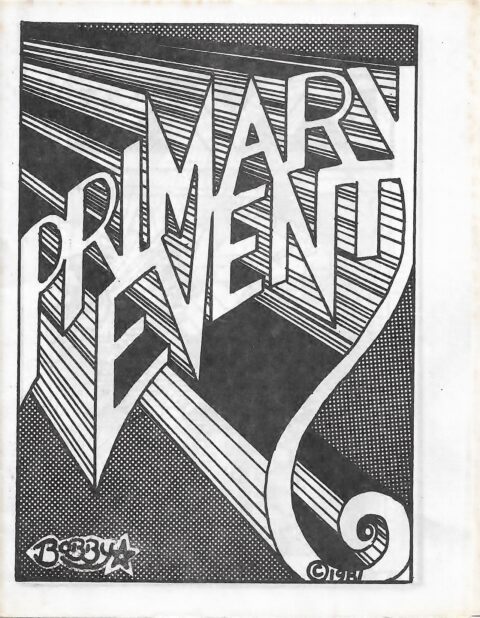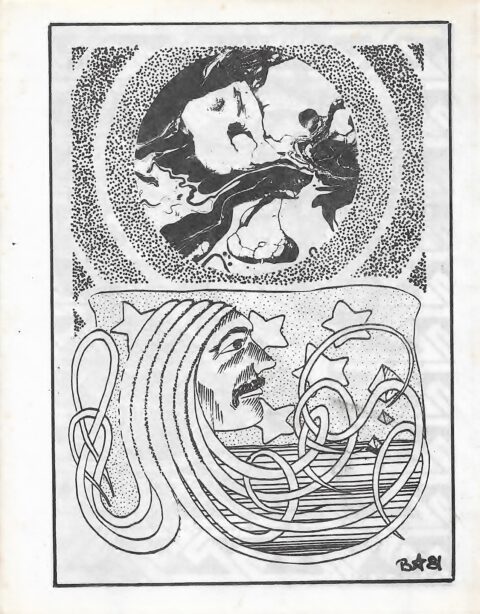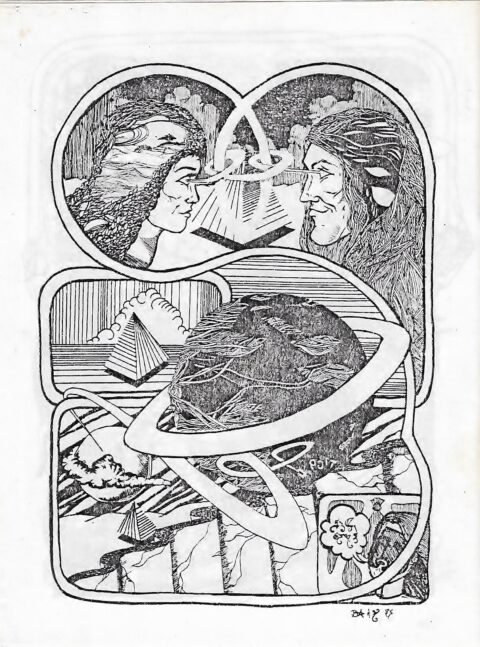It’s hard to believe that I have been writing Forgotten Silver for nearly five years. I have tried to stick to a monthly format, but there have been a few starts and stops during the pandemic era. In fact, due to the wildfire emergencies around the Halifax area, this month’s column nearly got bumped. Yet here we are.
When Comic Book Daily editor Scott VanderPloeg gave me the greenlight to start writing here, I had already been conducting research with Dan Bryantowich and Victor Marsillo for quite a while. Victor and I still pass notes back and forth from time to time, but the discovery phase of our research has long since passed and new discoveries have become infrequent. In the years since I started writing this column, I have had the opportunity to collaborate with people like Robin Bougie (NSFW) and have benefited from the continued research and camaraderie of people like Jason Vanderhill and the late Dr. Jean-Sébastien Guy. I have also benefitted greatly from the friendships I have made with numerous comic creators over the years, as well as the many people who have commented on or sent me messages about specific columns. Of course, none of this would be possible without people like Scott, Walter Durajlija and Ivan Kocmarek leading the way.
The last few years have been difficult to say the least. The world has changed. During the really dark days of the pandemic, I found solace in writing this column. Yet, I have recently found myself extremely dismayed about Canada’s political and economic future, as well as the present. Among people in my age cohort (Millennials) and the generation coming after me (Generation Z), there is a sense that Canada is broken and that we are being left behind. It can be hard to write about the history of a country that I often feel alienated by.
Recently, I have found myself gravitating more towards bandes dessinées québécoise and underground comix from the Canadian Silver Age more than anything else. Perhaps this is because I am having a hard time stomaching the uncritical nationalism that is a common part of some of the comics from the era. I have felt this way for a while, but it has certainly played a role in the types of comics that I have been writing about and I can’t see this changing anytime soon.

One of the great Canadian counter-culture comic groups is Winnipeg’s FreeKluck. I have long been a proponent of the group being inducted into the Canadian Comic Book Hall of Fame and wrote a two-part series about them in June and July, 2020. Earlier this year, Victor and I were able to uncover some information about some comics that we had documented (or heard rumours about), but had never seen in person. I have been saving these for now: welcome to the “Forgotten Silver 50th Issue Spectacular Starring FreeKluck.”
For those who are not familiar, FreeKluck (pronounced “Freak Luck”) was a collective of five men based in Winnipeg who were prolific mini comic creators in the early 1980s. Members of the group engaged in a variety of additional artistic projects across various mediums (including music and fine art), but the group itself is primarily associated with comics. The five members were: Frank McTruck, Roldo Odlor, Basil Hatte, Bobby Stahr and Jack D. Zastre (pronounced “Zas-tree”). There were plenty of other people in FreeKluck’s orbit and several others contributed to their comics, but were not official members of the group, such as: Martina Erskine, Loondancer, Dudley Clearsky and Kenny Moran.

FreeKluck continues to be of note for enthusiasts of Canadian comics, as they were likely the first group to popularize comic jams in the country and were also on the cutting edge of producing minis in the early 1980s before they became a mainstay of the indie comics scene during the new wave period. Their comics are arguably the last true underground comix of the Canadian Silver Age that were part of the counterculture movement. Frank McTruck also operated an underground comix shop, New Universe Comics, in Winnipeg in the early 1970s that was raided by police, linking the group to an outlaw era of Canadian comics that is rarely talked about and of which there is a dearth of research.
In July, 2020, I offered a FreeKluck checklist that was based on a significant amount of independent research, conversations with both Roldo Odlor and Frank McTruck, as well as images shared by both men and help from the Poopsheet Foundation. I was hopeful that all of this work would help to shake loose some new collections of these comics and lay the groundwork for a newfound interest in their work. Unfortunately, none of this came to pass.
This changed earlier this year when a collection of FreeKluck comics came to market for the first time in half a decade. Victor’s eagle-eyes worked to my benefit. He brought the comics to my attention and I immediately purchased them. The lot included copies of Primary Event, Myndphuck, Street Music, Bar Wars, and the Winnipeg Jam-Pac. The copies of Bar Wars and the Winnipeg Jam-Pac in the collection are special and proved that a long unverified rumour was actually true. The other three comics were ones that I had documented years ago. However, the only reason I had ever seen covers of them was because of the fine work of the Poopsheet Foundation.
After years of searching, I am excited to provide a closer look at these comics and finally provide concrete proof about the rumours concerning both Bar Wars and the Winnipeg Jam-Pac.
I have never spoken with Bobby Stahr. To this day, he has an extremely limited online presence. Despite being a key member of FreeKluck, he is arguably best known as a folk musician who has been playing guitar as part of the Winnipeg scene since the early 1970s. He even appears in Charles Konowal’s 2013 documentary about Scott Nolan, Chasing a Song. For Bobby Stahr (like the other members of the group) FreeKluck is only a small part of a much larger artistic trajectory and legacy.

All of the members of FreeKluck released their own comics independently of each other using the FreeKluck name/association and Bobby Stahr is no exception. However, until this collection appeared earlier this year, I had never had a chance to look at his solo comics or collaborations he did with Roldo. Unfortunately, Stahr’s rarest mini, Chrome Plated, was not included in the lot.

Nevertheless, the collection finally gave me access to Stahr’s first solo mini comic, Primary Event, which to my surprise is not really a comic at all. Instead, it is an eight-page art zine with solo images, rather than an example of sequential art. This rare mini only had a print run of 500 copies and I am glad to share images of it here.

The other one of Stahr’s comics that I acquired was 1982’s Myndphuck. The eight-page mini was a collaboration with Roldo. Like Primary Event, this mini had a print run of only 500 copies. However, Myndphuck is a work of sequential art. The mini presents a psychedelic sci-fi adventure with no dialogue.

Notice that the cover of Myndphuck is labelled “volume 1, number 1.” I assume that they intended to release a second issue of the comic at some point. Unfortunately, this never happened.

One of the things that stands out to me comparing Primary Event with Myndphuck is that Stahr’s artwork improves, but Roldo’s style and flourishes really gives Myndphuck more polish than the earlier mini. Take a look at this interior:

It was also exciting for me to finally have a chance to look through Jack D. Zastre’s Street Music (which, like the others, had a print run of only 500 copies). Many years ago, I had a chance to look at Zastre’s five-issue series Bar Wars at Library and Archives Canada and I was subsequently able to purchase all of the issues of the series from Frank McTruck. Bar Wars is a very silly satire of Star Wars and is quite crudely drawn. I had heard that Street Music was Zastre’s most interesting mini and after having had a chance to look at it I have to agree.

I was immediately surprised by the cover of this comic when I finally had it in hand. The comic’s title is actually on the back cover and the comic is designed to be read backwards in the way that I associate with manga. Like the other minis profiled above, this is an eight-pager. I really like this cover and found quite a bit of pleasure in the strips included in this comic when I read them for the first time. There are a few one-page strips here, but my favourite is the two-pager called “The Rock ‘N’ Roll Rodent.”

As delightful as it was to finally see these minis in person for the first time, the most important part of this collection was that it confirmed that the rumours were true: that is, that someone (likely Bobby Stahr) had taken remainder copies of some of FreeKluck’s minis after the group disbanded and bound them together to resell them. The rumour was that he had done so for both Bar Wars and the Winnipeg Jam-Pac (which other than their series Snafu, is arguably FreeKluck’s most important release). No one had been able to confirm this and speaking with Stahr himself ended up being impossible. We were resigned to waiting to see if specimens surfaced to confirm the rumours.

In the case of the collected edition of Bar Wars, the rumour was that remainder copies had been sewn together using a sewing machine.

As you can see, the comics have been sewn together. In hand, I can tell that this is old thread and was put together using a sewing machine with a DIY ethic (as the thread is not straight, but it serves its purpose).

What is really interesting (and much more important) is the Winnipeg Jam-Pac that I received as part of the collection. The rumours were true all along. Remainder copies of the minis were bound into faux leather with metal corners. The cover was then drawn by hand. The rumour that I heard many years ago was that Stahr had only made as many as a couple dozen of these. Given that these were handmade, there is no guarantee that the creations were standardized. Other examples could look quite different.
When I received these comics, they were in pretty rough shape. They were mildewy and smoky. I spent a couple of months treating them to remove the odours. I feel quite fortunate that I was able to save them and bring them back to life. For all I know, this is the only extant example of the Winnipeg Jam-Pac Special Edition that is still out there. Now that we know that the rumours were true, the next big question is whether or not more are still out there and, if so, did Stahr customize them?
I also recently came across a comic that was published in Halifax in the 1990s that has a very loose connection to FreeKluck: 1996’s The Adventures of the Evil Dwarf. Despite being a comic from the modern age, I thought that this would be a fun little aside for FreeKluck enthusiasts.
I picked up this comic at some point during the past couple of years, but didn’t get around to reading it until recently. It was one of a handful of comics that came out of Halifax in the mid-1990s during the era when Calum Johnston had opened his second Strange Adventures comic shop in the city and a nascent comic book scene emerged. Perhaps the most notable person who got their start during this era is the criminally underappreciated Dave Howlett, whose first published work appears in comic anthology Halifax Explosion is advertised inside of The Adventures of the Evil Dwarf.
The Evil Dwarf character was created by Chris Zimmer (who is best known as a film producer) and the comic was drawn by David Cullen, who continues to work in comics and has also worked as a storyboard artist in the film industry. However, the connection to FreeKluck comes from Zimmer’s co-writer: Basil Hatte’s brother, the late T.H. Hatte helped to write The Adventures of the Evil Dwarf.

T.H. was immortalized in his brother Basil’s The Notorious Hatte Brothers Gang mini comic, but was never directly involved with FreeKluck. Instead, he moved to Halifax in the early 1980s and started working in the film industry. He spent nearly a decade getting his dream project off the ground: the 1995 film Anchor Zone. However, the film flopped and is rarely seen today. The Adventures of the Evil Dwarf was a one-off project that was put together by a few people who were working in Halifax’s film industry at the time. As far as I know, this is the only time that T.H. Hatte is credited as writing a comic book (though Roldo once told me that a graphic novel version of Anchor Zone was a possibility before Hatte died).
The comic itself takes place in the dystopian future of 2025 in an east coast city called “New City,” where everything is controlled by the Global Internet and information is manufactured by the New City News which sends the Human Trauma Brigade to create tragedies for the public to consume via the news. Impoverished citizens live in the Old City and are described as “permanently off-line losers.” Only the wealthy who live in New City have access to the benefits of the Global Internet.
In the backdrop of this dystopia is a hero who the news media blames for everything that goes wrong in the city and has dubbed the “Evil Dwarf.” The hero has a familiar named “Felix,” which is a bat that he can communicate with telepathically. The narrative of this issue follows the “terrorist” Lisa Black trying to steal documents from the Federal Information Bureau building, as the Human Trauma Brigade sets off several explosions, leading to the deaths of numerous citizens around the building for the New City News to report on. It turns out the Black has been set up by the people she is working for, but she is rescued by the dwarf just before the building collapses. The comic ends with the two protagonists being blamed for the chaos by the news media.
It’s a very bizarre comic that attempts to engage in world-building, but a lot of what is going on here doesn’t make a lot of sense because there is so much happening that isn’t fleshed out. The creators obviously planned a second issue, but as far as I know it was never made. The comic reads as something of an allegory about the insecurities that the people of Halifax and Dartmouth felt in the mid-1990s just as the two cities were about to amalgamate, which also happened in 1996.
That brings us to the end of the Forgotten Silver 50th Issue Spectacular. FreeKluck continues to be one of my favourite parts of the Canadian Silver Age, so it felt fitting to use this month as an opportunity to return to the group and offer information about some loose ends that I have long been trying to take care of. Plus, making a connection between Winnipeg’s finest and the city where I live is something I couldn’t resist.
Here’s to another fifty issues of Forgotten Silver. Check back next month for more comic book weirdness from the era I call the “Canadian Silver Age.”



